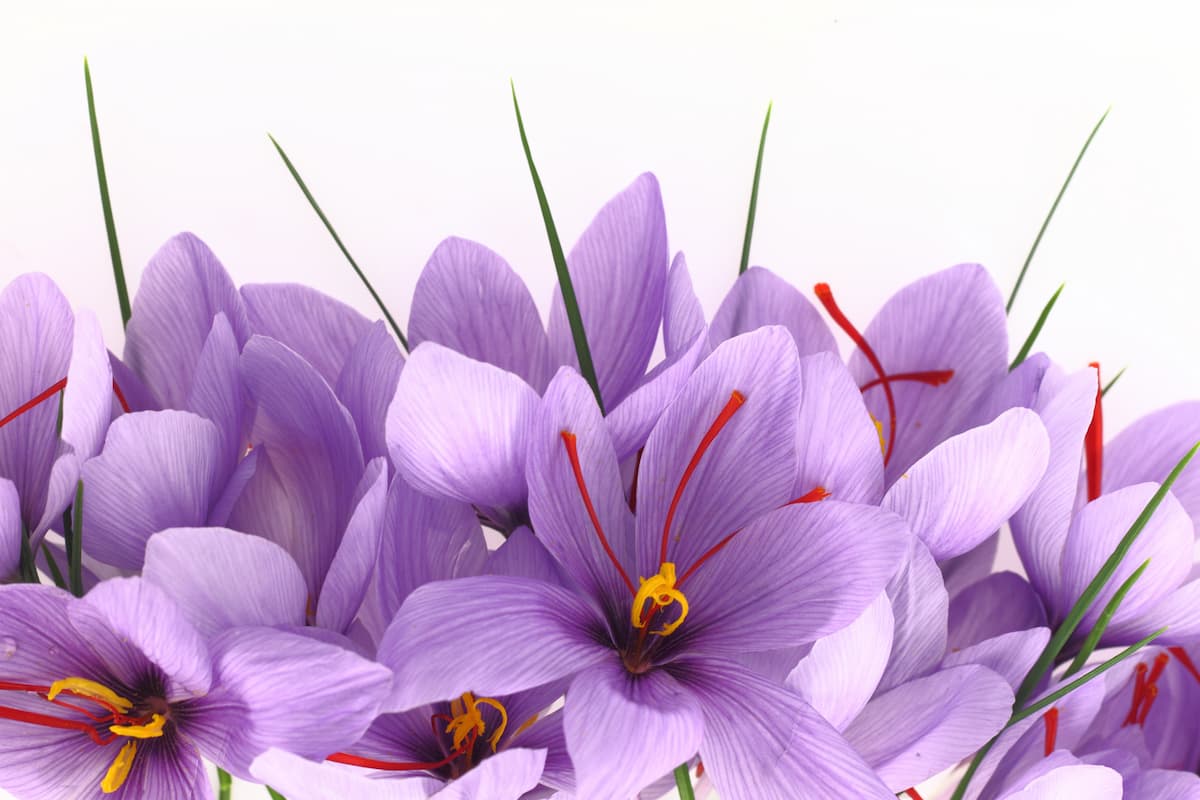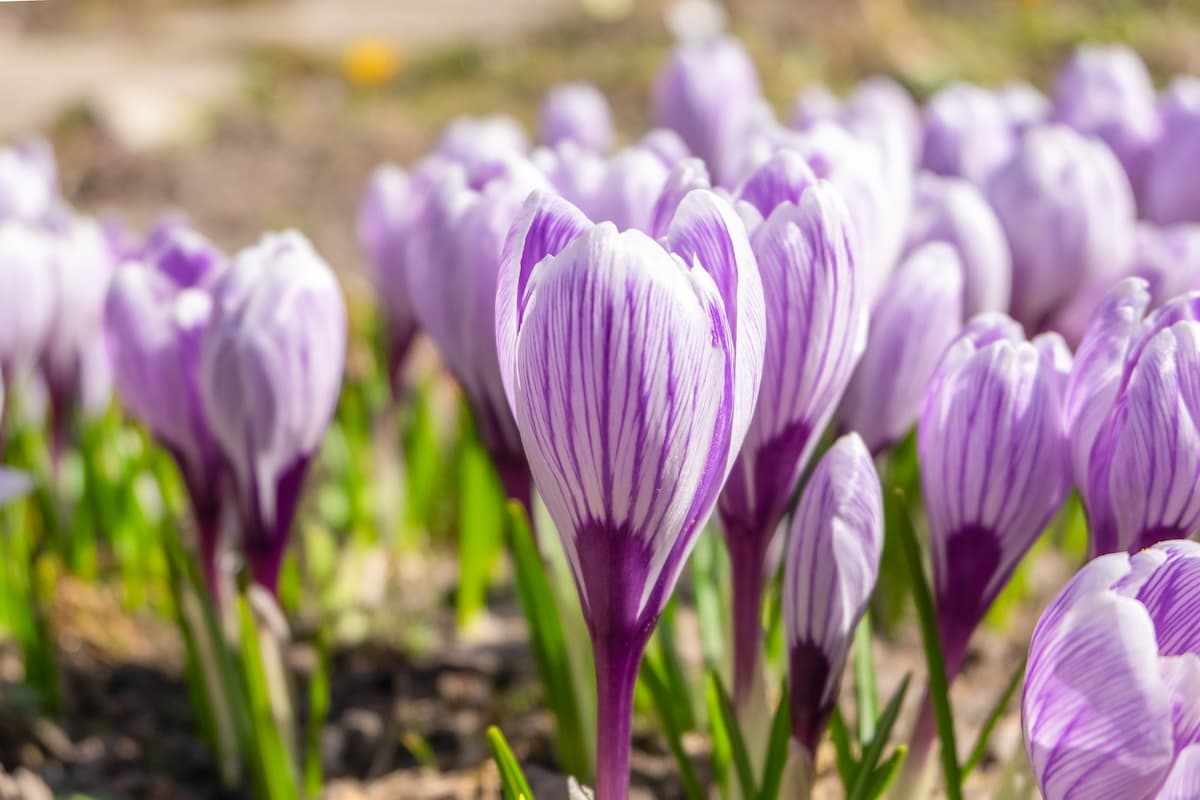Saffron is a valuable spice obtained from the three stigmas of the purple flowers of the saffron crocus plant. However, only a small percentage of these flowers are female, which can limit the yield of saffron spice. To increase the number of female flowers, it is essential to plant high-quality corms, provide optimal growing conditions with proper water, sunlight, and fertilizers, monitor for pests and diseases, use proper planting techniques, and avoid overcrowding.

Plant hormones like gibberellins can also be used to stimulate the production of female flowers, but consultation with a horticulturist or plant specialist is advised. By following these steps, it is possible to increase the number of female flowers and ultimately achieve a higher yield of saffron spice.
How to Increase Female Flowers in Saffron
Introduction to Saffron Cultivation
Saffron cultivation is the process of growing and harvesting Saffron, which is a valuable spice obtained from the stigmas of the saffron crocus plant. Saffron has been used for centuries in various cuisines, medicines, and cosmetics due to its unique flavor, color, and medicinal properties. Saffron cultivation requires specific climatic conditions, well-drained soil, and proper care and management practices to yield well. The process typically involves:
- Planting high-quality corms in the soil.
- Providing optimal growing conditions with adequate water, sunlight, and fertilizers.
- Regularly monitoring for pests and diseases.
The saffron crocus plant produces purple flowers, and the three stigmas of each flower are harvested by hand and dried to produce saffron spice. Saffron cultivation is a labor-intensive process that requires patience, expertise, and attention to detail. Still, the high value of Saffron makes it a lucrative crop for many farmers and growers worldwide.
Understand the Anatomy of Saffron Flowers
Saffron flowers (Crocus sativus) have six petal-like tepals, with a purple exterior and a lighter interior. The female reproductive part of the flower is the stigma, which is where the reddish-orange saffron threads are found. The stigma is connected to the ovary by a long, thin tube called the style, which is white.
The ovary is located at the base of the flower and contains ovules that can develop into seeds if fertilized. The stigmas must be carefully plucked by hand and dried to harvest Saffron. Due to the labor-intensive process and the many flowers required, Saffron is one of the most expensive spices in the world.
Best Variety of Cultivation Saffron
The best variety of Saffron for cultivation is generally considered the “Kashmiri” variety. It is known for its long, thick, and deep-red threads with a high concentration of crocin (a natural carotenoid pigment that gives Saffron its color). Kashmiri saffron is also known for its strong aroma and flavor, making it highly sought after in the culinary industry. Other popular varieties of Saffron include the “Spanish” and “Iranian” varieties.
Spanish Saffron is known for its deep red color and subtle aroma, while Iranian Saffron is known for its strong fragrance and flavor. Ultimately, the choice of which variety to cultivate will depend on various factors such as climate, soil type, and local growing conditions.
Optimal Growing Conditions for Saffron
- Climate: Saffron thrives in areas with a Mediterranean climate, characterized by hot, dry summers, and mild winters. The ideal temperature range for saffron cultivation is between 15-20°C (59-68°F).
- Soil: Saffron requires well-drained, loose, and fertile soil. The soil should have a pH level between 6-8.5 to ensure optimal growth.
- Water: Saffron requires regular watering during the growing season, but the soil should be clean. Over-watering can lead to fungal diseases.
- Sunlight: Saffron needs plenty of direct sunlight to grow, and it should be planted in areas that receive at least 6-8 hours of direct sunlight per day.
- Altitude: Saffron grows best at elevations between 700-1300 meters (2300-4200 feet) above sea level.
In case you missed it: How to Increase Female Flowers in Grapes: Explained in 10 Simple Steps for High Yields and Profit

For successful saffron cultivation, the ideal conditions include a Mediterranean climate, well-drained and fertile soil with a pH between 6-8.5, regular but not excessive watering, plenty of sunlight, and elevations between 700-1300 meters (2300-4200 feet) above sea level.
Saffron Flowering Stage
The saffron flowering stage is crucial as it is when the plant produces the valuable saffron threads. The flowers typically appear between September and November, each containing three stigmas that are the source of the saffron threads. The stigmas are carefully plucked by hand and are bright red or orange in color.
The plant then enters a dormant phase, conserving energy and preparing for the next growing season. It is important to manage the plant carefully during this time to ensure optimal growth and development for the following year. This labor-intensive process contributes to the high cost of Saffron.
Factors that Affect Less Female Flowers in Saffron
- Planting density: too many bulbs planted too closely can lead to competition for nutrients and light, reducing female flower production.
- Soil quality: poor soil quality can limit the plant’s access to necessary nutrients, leading to lower flower production.
- Climate: extreme weather conditions like high heat or cold temperatures can negatively affect flower production.
- Watering: both overwatering and underwatering can contribute to lower flower production.
- Disease and pests: various diseases and pests can damage the plant and reduce yields.
- Aging bulbs: older bulbs have a lower lifespan and may not produce as many female flowers as younger bulbs.
10 Simple Tips to Increase Female Flowers in Saffron
- Proper plant spacing to avoid competition for nutrients and light.
- Soil management with nutrient-rich and well-draining soil.
- Control of growing conditions, such as moderate temperatures and humidity.
- Regular watering to maintain optimal moisture levels in the soil.
- Prevention of pest and disease damage through proper management and treatment.
- Fertilization during the growing season promotes healthy plant growth and flower production.
- Timely harvesting of flowers to promote continued flower production.
- Crop rotation to prevent soil depletion and promote optimal growth conditions.
- Use of healthy bulbs for planting to ensure optimal flower production.
- Proper saffron bulbs storage prevents damage and ensures optimal growth in the next planting season. By following these tips, saffron growers can increase their chances of producing more female flowers and ultimately increase saffron yields.
In case you missed it: How to Increase Female Flowers in Kiwi: Explained in 10 Steps for High Yields and Profit

Conclusion
To increase saffron yields, it’s crucial to increase female flower production in saffron plants. Adequate soil management, climate control, pest and disease control, fertilization, timely harvesting, crop rotation, and proper storage are some of the crucial factors that can help promote higher female flower production. By paying attention to these factors, saffron growers can improve their saffron yields.
- Feed Your Flock for Less: Top 10 Tips to Save on Chicken Feed
- Ultimate Guide to Ossabaw Island Hog: Breeding, Raising, Diet, and Care
- Hatching Answers: The Top 10 Reasons Your Chickens Aren’t Laying Eggs
- Eggs and Economics: Breaking Down the Cost of Raising Backyard Chickens
- Defend Your Greens: Proven Methods to Keep Iguanas Out of Your Garden
- Ultimate Guide to Cinnamon Queen Chicken: A Comprehensive Guide for Beginners
- Ultimate Guide to California Tan Chicken: Breeding, Raising, Diet, Egg-Production and Care
- Ultimate Guide to Marsh Daisy Chicken: Breeding, Raising, Diet, and Care
- 10 Types of Chicken Farming Businesses You Can Start for Profits